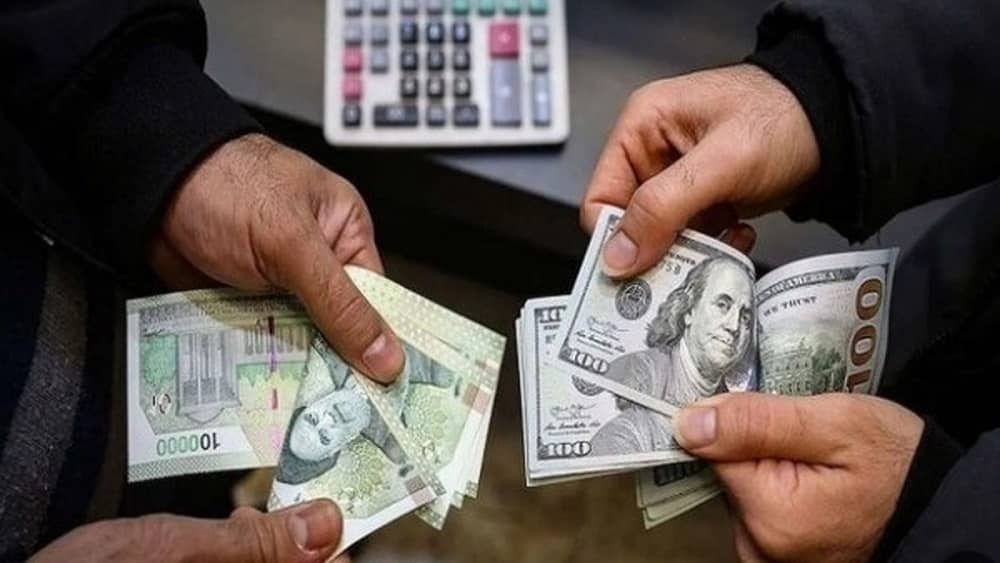Iran’s currency crisis is a reflection of decades of poor economic policies rooted in a multi-rate exchange system that has fostered corruption and inequality. As we head into 2025, the situation has escalated dramatically. The free-market exchange rate for the U.S. dollar has surged to 93,850 tomans, illustrating a growing divide from the official rate of 72,053 tomans. This divergence signifies not merely a routine market fluctuation but a systemic issue that has plagued Iran for over four decades.
The Multi-Rate Exchange System: A Double-Edged Sword
The Iranian government has historically implemented a multi-rate exchange policy, ostensibly to control inflation and manage the economy. However, this approach has largely backfired, creating an environment ripe for corruption and exploitation. Various mechanisms, such as the official rate, the commercial rate, and the free-market rate, are manipulated by regime-affiliated networks. They benefit from these discrepancies, siphoning national resources while the general population suffers from skyrocketing prices and diminished purchasing power.
Structural Weaknesses and Economic Isolation
Several factors exacerbate Iran’s economic dilemma:
International Sanctions: Years of sanctions have severely restricted Iran’s access to global markets, crippling its export capabilities and diminishing foreign reserves.
Political Risks: Political instability, along with issues of governance and repression, creates an atmosphere of uncertainty that deters both domestic and foreign investment.
- Environmental Crises: Problems like water scarcity and energy imbalances hamper agricultural output and exacerbate economic vulnerabilities.
Despite the promise of a robust national development plan aimed at positioning Iran as a leading economy in West Asia, the reality is starkly different. The nation’s economy has stagnated under the weight of these compounded issues.
Failures of Past Policies: A Pattern of Crisis
The history of Iran’s exchange rate policy illustrates a continual cycle of mismanagement:
- Early Years (1991-2010): A brief period of single-rate policies, followed by dual rates that widened significant gaps.
- Sanctions Era (2011-2021): The introduction of preferential rates for essential goods became synonymous with bureaucratic corruption.
- Current State (2022-Present): The establishment of a Currency Exchange Center has further entrenched multiple exchange rates, effectively sidelining authentic market forces.
Today, the commercial exchange rate fluctuates between 67,000 and 69,000 tomans, creating vast discrepancies compared to the free market, which sits above 93,000 tomans. This chaos fuels rampant speculation and enriches a select few—those with ties to the regime.
Central Bank: A Tool for Financial Mismanagement
The Iranian Central Bank has historically been stripped of its autonomy, transforming it into a mechanism for financing government deficits rather than stabilizing the currency. Years of interference have led to a depletion of foreign reserves and skyrocketing inflation rates, often exceeding 40%. The bank’s ability to manage liquidity has been compromised, effectively chaining it to the regime’s policies instead of serving the public’s economic interests.
Prominent economic figures, including former Deputy Governor Kamal Seyed Ali, corroborate this assessment, pointing out that government interventions have merely served to deepen social inequalities and entrench systemic rent-seeking behaviors. The cycle of crisis is exacerbated by a lack of structural reforms, leaving the population vulnerable to economic shocks.
Socio-Economic Implications
The ongoing crisis manifests in various socio-economic troubles for the Iranian populace. With inflation continuing to erode purchasing power, the middle class is gradually disappearing, leaving many Iranians struggling to afford basic necessities. The gap between rich and poor widens, with insiders benefitting from the disparity while ordinary citizens face economic hardships.
Economist Ali Madanizadeh has issued warnings about the potential for increased public discontent, noting that social unrest might become inevitable should the regime fail to address these spiraling issues. Instead of embarking on genuine reforms, the government has opted for band-aid solutions that only serve to delay the crisis.
A Path Forward: Reform or Collapse?
Moving forward, Iran faces a critical juncture. The necessity for meaningful economic reform is palpable, but structural weaknesses such as political repression, corruption, and lack of institutional independence loom large. The historical reliance on arbitrary exchange mechanisms has clearly failed, and radical policy shifts are necessary to stabilize the economy.
Steps to consider might include:
Dismantling the Multi-Rate System: Transitioning to a more unified exchange rate could bring about much-needed transparency and trust in market transactions.
Strengthening Central Bank Independence: Empowering the Central Bank to act autonomously could aid in managing inflation and restoring confidence among investors.
Addressing Corruption: Implementing stringent measures against corruption would help restore fairness in economic opportunities.
- Fostering Investment: Creating a stable political environment conducive to both foreign and domestic investment is crucial for long-term economic growth.
Conclusion
Iran’s currency crisis is an intricate tapestry woven from decades of failed economic policies and societal neglect. The multi-rate system, initially intended for economic control, has morphed into a tool for systemic corruption, benefitting the elite while disenfranchising the masses. Unless significant reforms are made to address these foundational issues, the cycle of crisis is likely to continue, perpetuating economic instability and social unrest in Iran. The time for fundamental change is now, but only time will tell whether the regime can rise to meet this challenge or if it will succumb to its legacy of mismanagement and decay.









